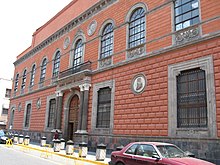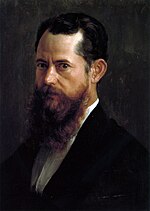
The National Autonomous University of Mexico is a public research university in Mexico. It has several campuses in Mexico City, and many others in various locations across Mexico, as well as a presence in nine countries. It also has 34 research institutes, 26 museums, and 18 historic sites.
Rafael Ximeno y Planes was a Spanish painter and draughtsman born in Valencia and deceased in Mexico.

Luis Nishizawa Flores was a Mexican artist known for his landscape work and murals, which often show Japanese and Mexican influence. He began formal training as an artist in 1942 at the height of the Mexican muralism movement but studied other painting styles as well as Japanese art.

Manuel Vicente Tolsá Sarrión was a prolific Neoclassical architect and sculptor in Spain and Mexico. He served as the first director of the Academy of San Carlos.

The Museo Nacional de Arte (MUNAL) is the Mexican national art museum, located in the historical center of Mexico City. The museum is housed in a neoclassical building at No. 8 Tacuba, Col. Centro, Mexico City. It includes a large collection representing the history of Mexican art from the mid-sixteenth century to the mid 20th century. It is recognizable by Manuel Tolsá's large equestrian statue of Charles IV of Spain, who was the monarch just before Mexico gained its independence. It was originally in the Zocalo but it was moved to several locations, not out of deference to the king but rather to conserve a piece of art, according to the plaque at the base. It arrived at its present location in 1979.

The equestrian statue of Charles IV of Spain is a bronze sculpture cast by Manuel Tolsá built between 1796 and 1803 in Mexico City, Mexico in honour of King Charles IV of Spain, then the last ruler of the New Spain. This statue has been displayed in different points of the city and is considered one of the finest achievements of Mr. Tolsá. It now resides in Plaza Manuel Tolsá.
Academia Nacional de Bellas Artes San Alejandro, is the oldest and most prestigious fine arts school in Cuba. It is also known as Escuela Nacional de Bellas Artes "San Alejandro", Academia San Alejandro, or San Alejandro Academy. The school is located in Marianao, a suburb of Havana, and was founded in 1818 at the Convent of San Alejandro.

The School of Architecture at UNAM is one of the leading schools of architecture and design in Mexico. It offers undergraduate and postgraduate studies in architecture, landscape architecture, urbanism and industrial design.

Manuel Felguérez Barra was a Mexican abstract artist, part of the Generación de la Ruptura that broke with the muralist movement of Diego Rivera and others in the mid 20th century.

José Chávez Morado was a Mexican artist who was associated with the Mexican muralism movement of the 20th century. His generation followed that of Diego Rivera, José Clemente Orozco and David Alfaro Siqueiros. Although Chávez Morado took classes in California and Mexico, he is considered to be mostly self-taught. He experimented with various materials, and was an early user of Italian mosaic in monumental works. His major works include murals at the Ciudad Universitaria, Secretaría de Comunicaciones y Transportes and Museo Nacional de Antropología in Mexico City as well as frescos at the Alhóndiga de Granaditas, which took twelve years to paint. From the 1940s on, he also worked as a cultural promoter, establishing a number of cultural institutions especially in his home state of Guanajuato including the Museo de Arte Olga Costa - José Chávez Morado, named after himself and his wife, artist Olga Costa.
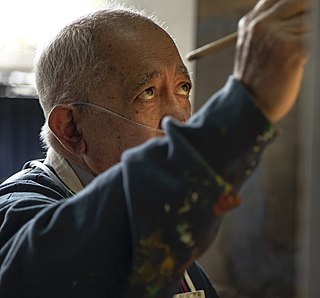
Gilberto Aceves Navarro was a Mexican painter and sculptor and a professor at the Escuela Nacional de Artes Plásticas and Academy of San Carlos. There have been more than two hundred individual exhibits of his work, with his murals found in Mexico, Japan and the United States. He received numerous awards for his work including grants as a Creador Artístico of the Sistema Nacional de Creadores de Arte, Premio Nacional de Ciencias y Artes and Bellas Artes Medal from the Instituto Nacional de Bellas Artes.

Various types of visual arts developed in the geographical area now known as Mexico. The development of these arts roughly follows the history of Mexico, divided into the prehispanic Mesoamerican era, the colonial period, with the period after Mexican War of Independence, the development Mexican national identity through art in the nineteenth century, and the florescence of modern Mexican art after the Mexican Revolution (1910-1920).
Gustavo Arias Murueta was a Mexican painter, sculptor and poet, a member of the Salón de la Plástica Mexicana best known for his work in drawing, graphic arts and oil painting. He originally studied architecture at the Universidad Nacional Autónoma de México where he met artists such as Rufino Tamayo, David Alfaro Siqueiros and José Clemente Orozco. In the 1950s, he began to produce artworks, with his first exhibition in 1961. From then until his death he had a career as an artist with individual and collective exhibitions in both Mexico and abroad. While his work had been heavily influenced by Orozco, he was considered part of the Generación de la Ruptura movement.

Chilean art refers to all kinds of visual art developed in Chile, or by Chileans, from the arrival of the Spanish conquerors to the modern day. It also includes the native pre-Columbian pictorial expression on modern Chilean territory.
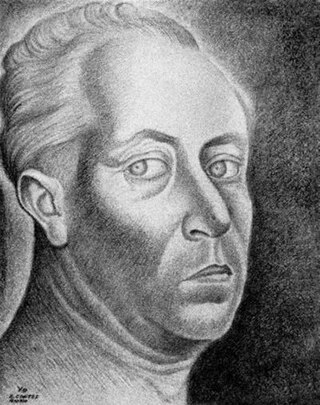
Erasto Cortés Juárez was a Mexican artist and a founding member of the Salón de la Plástica Mexicana.
Francisco Moreno Capdevila was a Mexican artist of Spanish origin, best noted for his engraving and other graphic work. He came to Mexico as a political refugee after the fall of the Republicans in 1939. Unlike other Spanish artists of his generation, he was young when he arrived and did not begin studying or working in art until he was in Mexico. His work generally had cultural and political themes, but also included a portable mural about the fall of Tenochtitlan. This work was at the Museo de la Ciudad de México for thirty years, but today it is at the law school of the Universidad Nacional Autónoma de México. His work was recognized by membership in various honor societies, including the Salón de la Plástica Mexicana and the Academia de Artes.
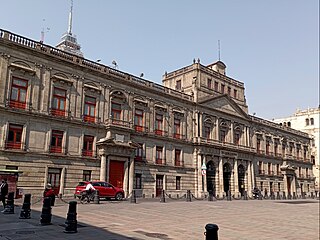
The Palace of Mining, also Palace of Mines, is a building in Mexico City, Mexico, considered to be a fine example of Neoclassical architecture in the Americas. It was designed and built between 1797 and 1813 by Valencian Spanish sculptor and architect Manuel Tolsá. It was built to house the Royal School of Mines and Mining of the Royal Court at the request of its director, Fausto Elhuyar, a scientifically-trained mineralogist.

José M. Bayro Corrochano is a plastic artist Bolivian and nationalised Mexican that produces oil paintings, sculptures and engraving. It is known by his monumental works La pareja del Trompo and El Hombre Azul

Sculpture is one of the oldest arts in Mexico. In Prehispanic Mexico, it is present in pyramids, sanctuaries, esplanades and communal objects; examples of this are the Olmec, Mayan, Teotihuacan, Tarascan, Mixtec and Aztec sculptures.
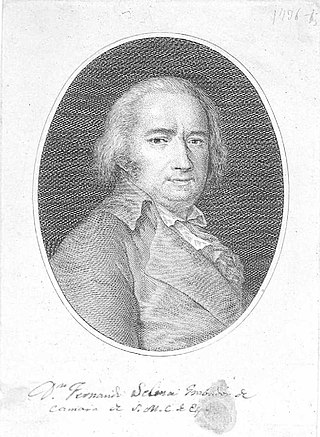
Fernando Selma was a Spanish engraver and illustrator.
